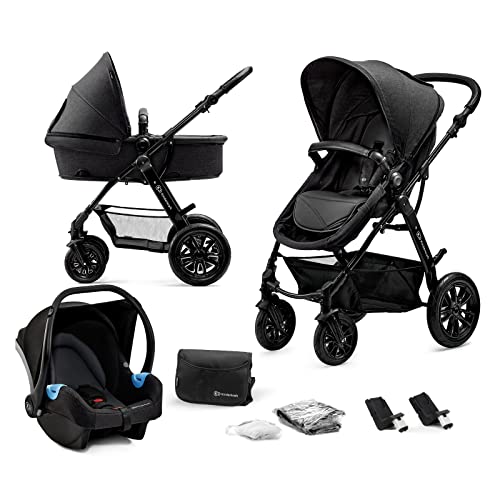How To Get More Value With Your Pram
Pram and Pushchair Travel System: A Comprehensive Guide for Parents
As moms and dads start the amazing journey of inviting a brand-new kid, picking the right travel system can be an overwhelming job. The pram and pushchair travel system has gained enormous appeal over the last few years for its combination of convenience, security, and versatility. This article looks into the complexities of prams and pushchairs, checks out the advantages of these travel systems, and offers practical suggestions for prospective parents.
Understanding Travel Systems
A travel system usually integrates a stroller (or pushchair) with a carrycot (or pram) and a baby cars and truck seat. This combination enables parents to shift flawlessly between walking and driving without disturbing their sleeping babies.
Parts of a Travel System
Component
Description
Pram
Designed for infants, a pram supplies a flat, comfy space for the baby to rest. Perfect for newborns up until they can stay up.
Pushchair
A stroller developed for older infants and toddlers, including a reclining seat that permits babies to sit upright as they grow.
Safety seat
A safety seat that can be easily clicked into the frame of the stroller or pram, permitting for safe travel between vehicle and street.
Benefits of Using a Pram and Pushchair Travel System
Selecting a pram and pushchair travel system has several benefits that attract modern-day moms and dads. Here are a few of the essential benefits:
Convenience
- One total system makes it easy to change from cars and truck to stroller without hassle.
- Reduces the requirement to wake a sleeping baby.
Cost-Effectiveness
- Getting a travel system can be more economical than purchasing each part independently.
Security
- Travel systems are developed to ensure that cars and truck seats are securely connected to the stroller, lessening the threat of mishaps.
Flexibility
- Lots of travel systems offer adjustable features, consisting of reclining seats and detachable covers, enabling them to adapt as the child grows.
Space-Saving
- Travel systems are compact and can typically fit quickly in the trunk of an automobile.
Choosing the Right Pram and Pushchair Travel System
When picking the best travel system, here are some elements to think about:
1. Age and Size of the Baby
- Prefer a pram function for newborns.
- Make sure that the pushchair can accommodate growth, particularly in regards to weight and height limits.
2. Security Features
- Try to find features like a five-point harness, brakes, and stability.
- Look for safety certifications.
3. Weight and Portability
- Consider how heavy the system is and whether it's simple to fold and lift.
- A light-weight system tends to be more workable, particularly for parents navigating public transport.
4. Reduce of Use
- Look for intuitive mechanisms, such as simple fold-and-unfold operations or how easily the safety seat can be secured.
5. Surface Compatibility
- Recognize the kinds of surface areas where the system will be used most. Some strollers carry out much better on yard or rough surface than others.
6. Budget
- Identify your spending plan ahead of time. Travel systems can range from economical to high-end models.
Upkeep Tips for Travel Systems
To guarantee durability and safety, it's necessary to keep your travel system properly. Here are some upkeep tips:
- Regular Cleaning: Wipe down the stroller after every use and clean the fabric regularly.
- Look for Wear and Tear: Routinely examine the wheels, brakes, and harness for any damage.
- Follow Manufacturer Guidelines: Pay attention to guidelines on assembly, use, and storage.
- Storage Considerations: Store the travel system in a dry place to prevent mildew and damage.
Frequently asked questions About Pram and Pushchair Travel Systems
1. How quickly can I begin using a travel system?
A lot of travel systems can be utilized from newborn phase, however always examine the producer's guidelines.
2. Can advice here use a car seat from a various brand name with my travel system?
Typically, it's recommended to use elements from the very same brand for security compatibility, but some systems may permit universal safety seat.
3. Are travel systems heavy?
Weight varies by design. Finding a balance between toughness and lightweight designs is important.
4. At what age should I change from a pram to a pushchair?
The majority of babies are ready to transition once they can sit up individually, normally around 6 months of age.
5. How do I tidy my travel system?
Most travel systems feature removable and washable covers. For frames, a moist fabric normally is enough.
Navigating the world of baby equipment can be a complicated experience for new parents. The pram and pushchair travel system offers an ideal service for those seeking convenience, security, and adaptability. By comprehending the components, benefits, and includes to consider, moms and dads can make informed options that suit their lifestyle and their child's requirements. With extensive research and thoughtful consideration, choosing the perfect travel system becomes a workable job, allowing parents to accept the delights of parenthood with ease.
